Pressure Washing: Quick Tips for a Spotless Home Exterior
Got a dirty driveway, grimy walls, or moldy siding? A pressure washer can blast those stains away in minutes. It’s cheap, fast, and works on most outdoor surfaces. Below you’ll find simple steps that keep you safe and get great results without a professional.
Why Use a Pressure Washer?
Pressure washing delivers a strong stream of water that lifts dirt, algae, and grease that a garden hose can’t reach. It’s especially good for removing mold on brick, cleaning oil stains from a garage floor, and brightening faded pavers. Because the water hits the surface at high speed, you use less detergent and finish the job quicker.
Another perk is cost. Buying a basic electric unit costs under £100, and a gas‑powered model for larger jobs starts around £250. You can rent a bigger machine for a day if you only need it once. The money you save on labor adds up fast, especially if you tackle regular upkeep yourself.
How to Get the Best Results
1. Choose the right pressure. For wood decks or delicate siding, stay under 1,200 PSI. Hard surfaces like concrete can handle 2,500–3,000 PSI. Too much pressure can gouge surfaces, so start low and increase only if needed.
2. Use the proper nozzle. A 25-degree nozzle gives a wide spray for large areas. Switch to a 0-degree tip only for stubborn spots—always keep it moving to avoid burning the material.
3. Prep the area. Sweep away loose debris, close windows, and cover plants with a tarp. This prevents dirt from scratching surfaces and protects your garden from chemicals.
4. Apply detergent wisely. Fill the detergent tank with a biodegradable cleaner safe for the environment. Let it sit for a few minutes to break down grime, then rinse with the pure water tip.
5. Work from top to bottom. Start high on walls and work downwards. Gravity helps the runoff carry away the loosened dirt, leaving lower areas cleaner.
6. Spot‑check for mold. If you see black patches, spray a mixture of water and a small amount of bleach (1:10) after the first rinse, let it sit 10 minutes, then give a final rinse. This kills spores and prevents regrowth.
7. Finish with a quick dry. Use a leaf blower or let the sun do the work. A dry surface reduces streaks and makes the area look instantly brighter.
Remember safety: wear goggles, gloves, and sturdy shoes. Never point the wand at people, pets, or electrical outlets. If you’re unsure about the right pressure for a surface, test a small hidden spot first.
With these tips, you can keep driveways, patios, and siding looking fresh all year. Regular light washes prevent deep grime buildup, so you’ll spend less time and money on big clean‑ups later. Ready to fire up that pressure washer? Your home exterior will thank you.
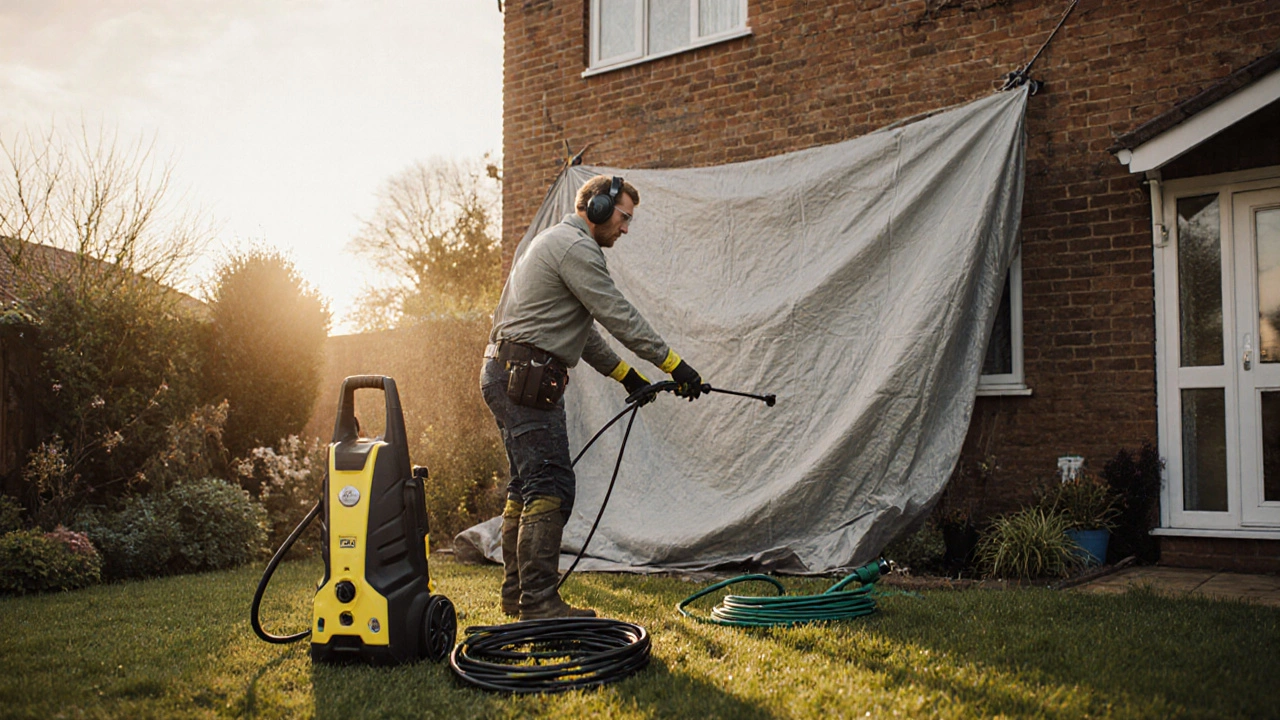
Essential Prep Items for Pressure Washing Your Home
Learn the must‑have items and step‑by‑step prep routine for pressure washing your home, from safety gear to cleaning agents and protective covers.
Read More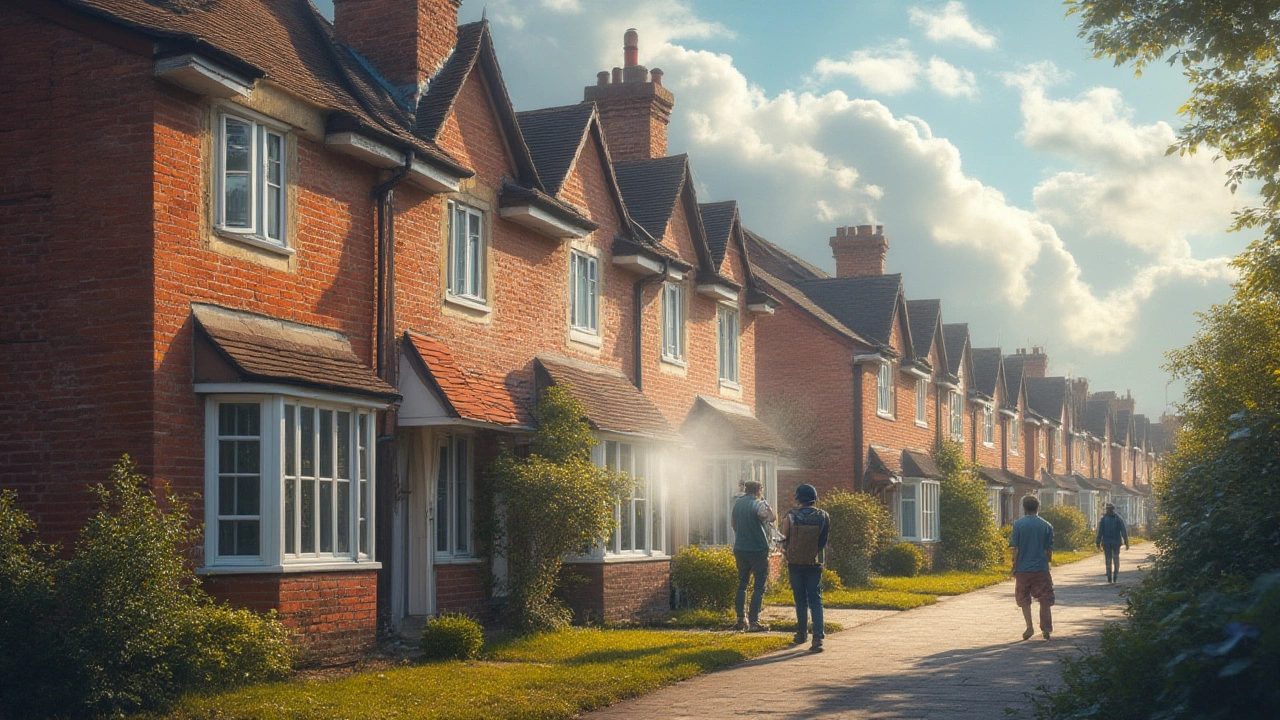
How Long Does It Take to Pressure Wash a House: Expert Timing Guide
Find out exactly how long it takes to pressure wash a house, the factors that affect timing, tips to speed things up, and what DIYers and pros need to know.
Read More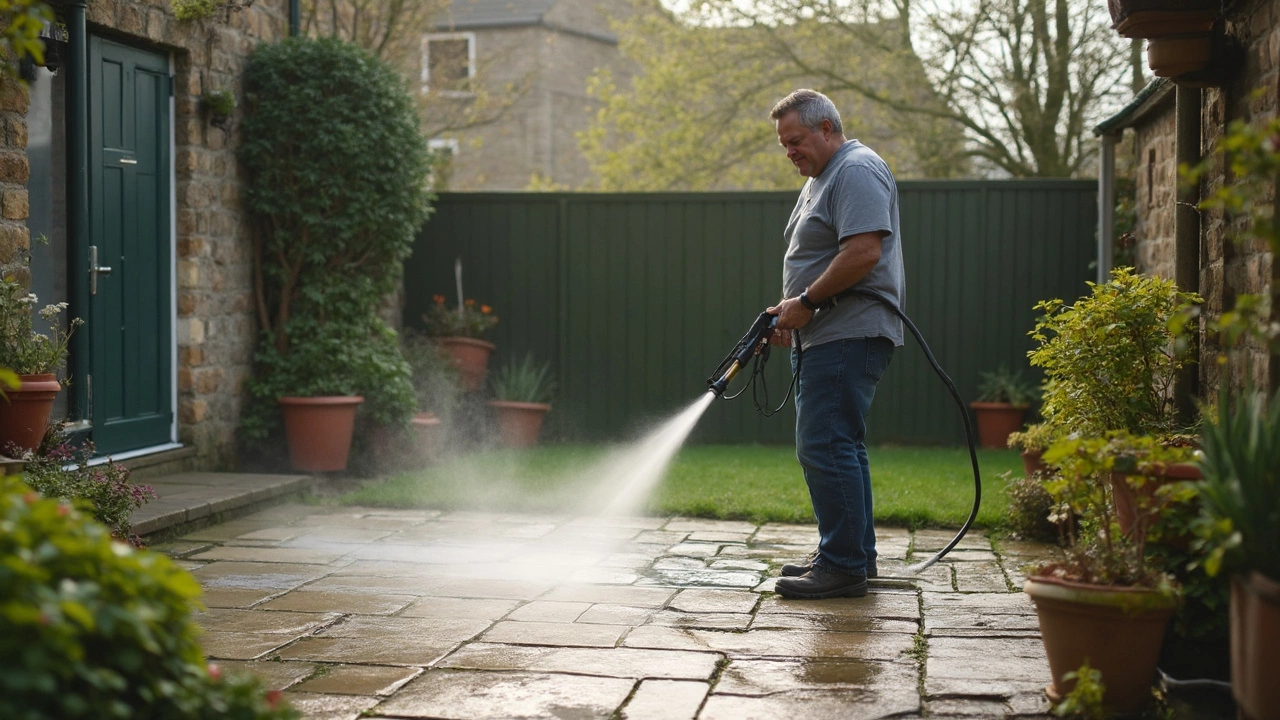
Pressure Wash with Just Water: How Effective Is It?
Ever wondered if blasting away dirt with just water and a pressure washer can get the job done? This article breaks down when water alone is enough, where it might not cut it, and what actually happens on different outdoor surfaces. You'll find out the real-life limits and perks of skipping the soap. Get practical tips on how to get the most out of your pressure washer if you use just water. Real answers from someone who's made the mess and cleaned it up.
Read More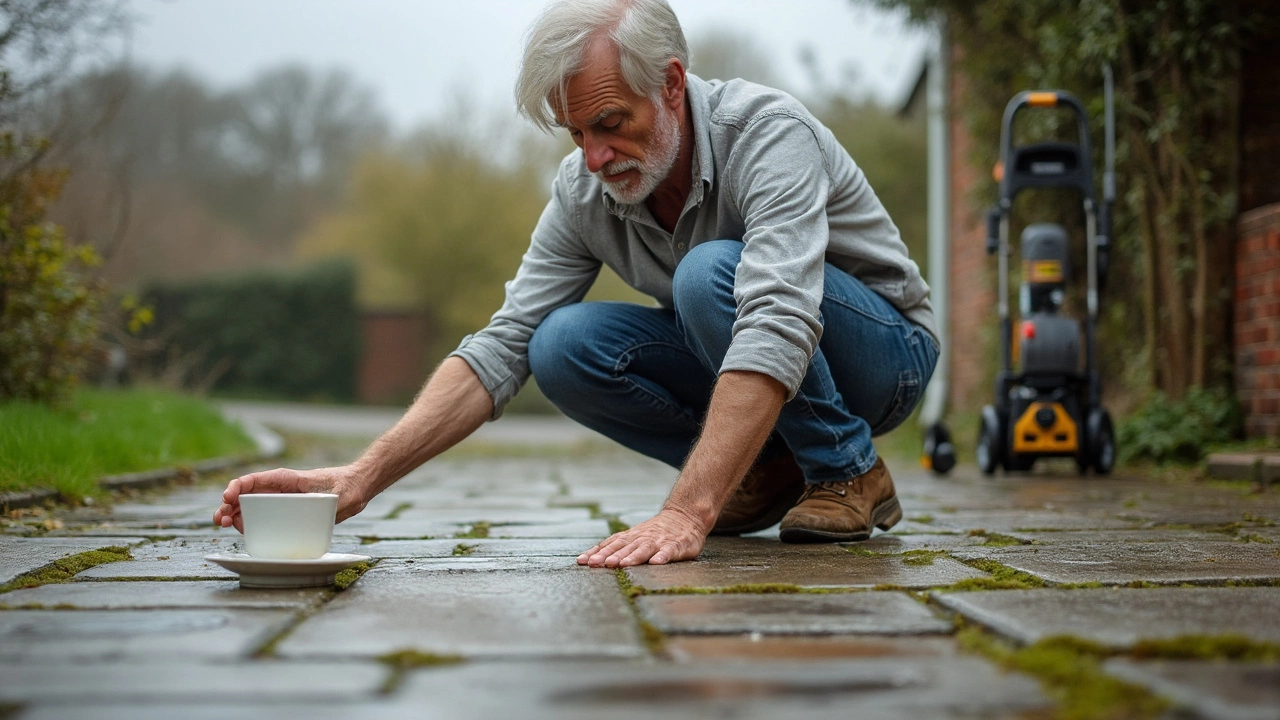
Will 3500 PSI Damage Concrete? Pressure Washing Facts You Need to Know
Ever wondered if a 3500 PSI pressure washer could wreck your driveway or patio? This article breaks down what actually happens to concrete under that kind of force, why PSI matters, and what you risk if you grab a powerful washer without a plan. Get practical advice for keeping your concrete safe while tackling tough grime. Real-life tips from homeowners and pros. Avoid costly mistakes with the right know-how.
Read More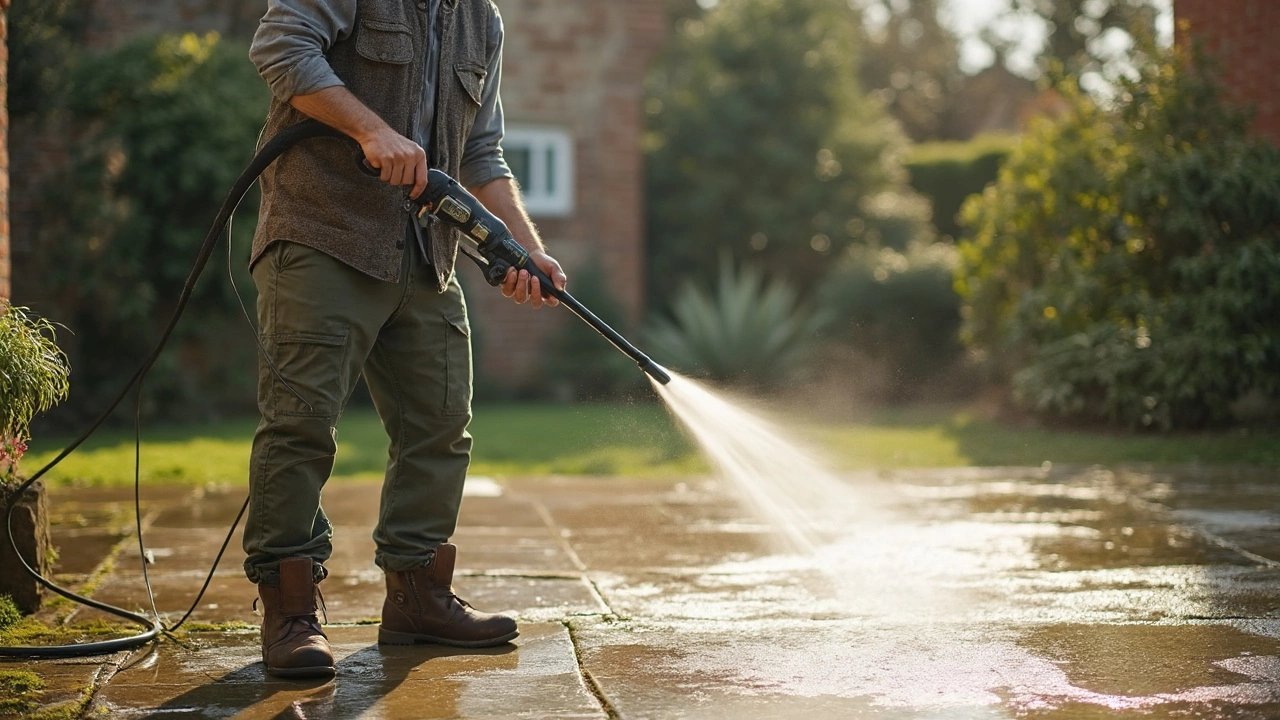
Will 2000 PSI Clean Concrete? Real Answers About Pressure Washing Power
Curious if a 2000 PSI pressure washer will get your concrete looking like new? This article digs into what 2000 PSI can and can’t do, breaking down how it handles stains, grime, and even mold. You’ll get tips from real experiences, not just theory. We’ll talk about safety, smart techniques, and when you might need to go stronger. If you want your driveway or patio to shine again, this guide brings the facts.
Read More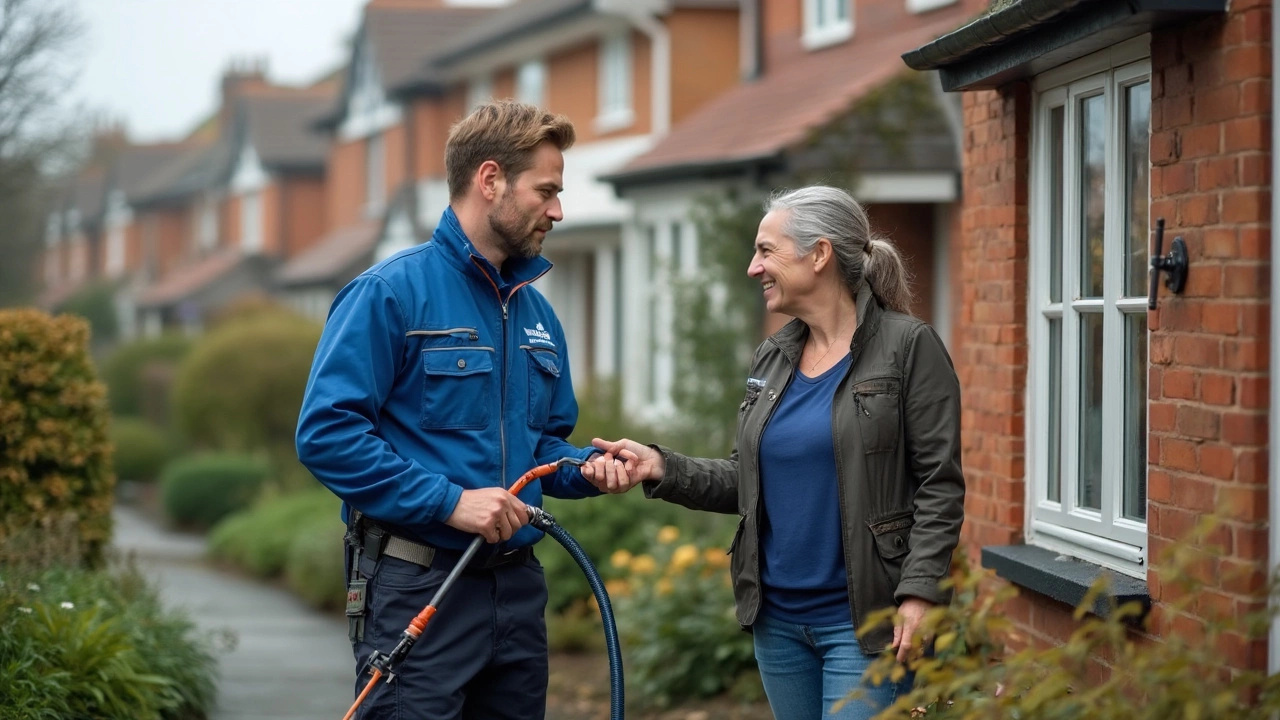
Pressure Washing: Do You Use the Customer's Water?
Ever wondered if pressure washing companies use your water or bring their own? This article explains how water supply works for pressure washing jobs, who usually pays for the water, and what you should ask before hiring someone. It also covers how much water is used and tips to avoid surprises on your bill. No jargon, just straight answers and practical advice.
Read More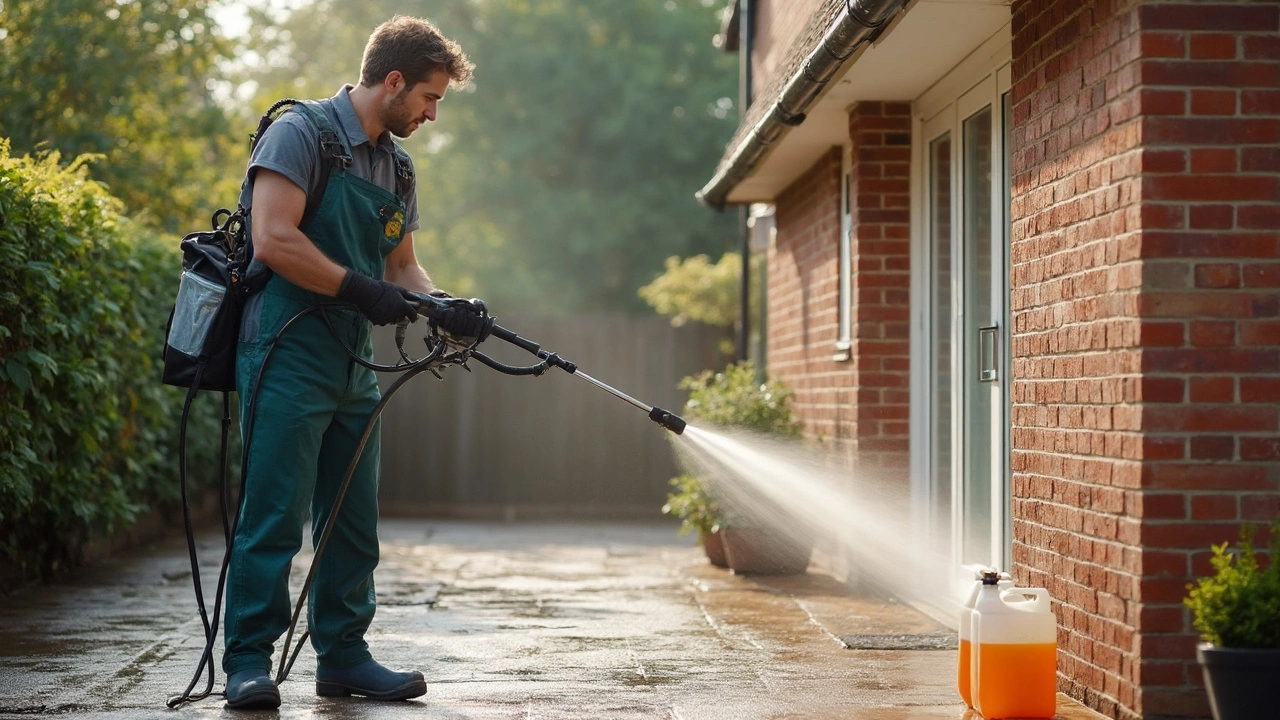
Power Wash a House: What the Pros Actually Use
Ever wonder what the pros use to power wash a house? This guide breaks down the exact equipment, soaps, nozzles, and techniques real professionals reach for to get homes spotless and damage-free. You'll find out why pro gear matters, which detergents make the most difference, and tips for safe cleaning on any siding. If you're tackling a big cleaning job or just curious, this article gives you the inside scoop without all the jargon.
Read More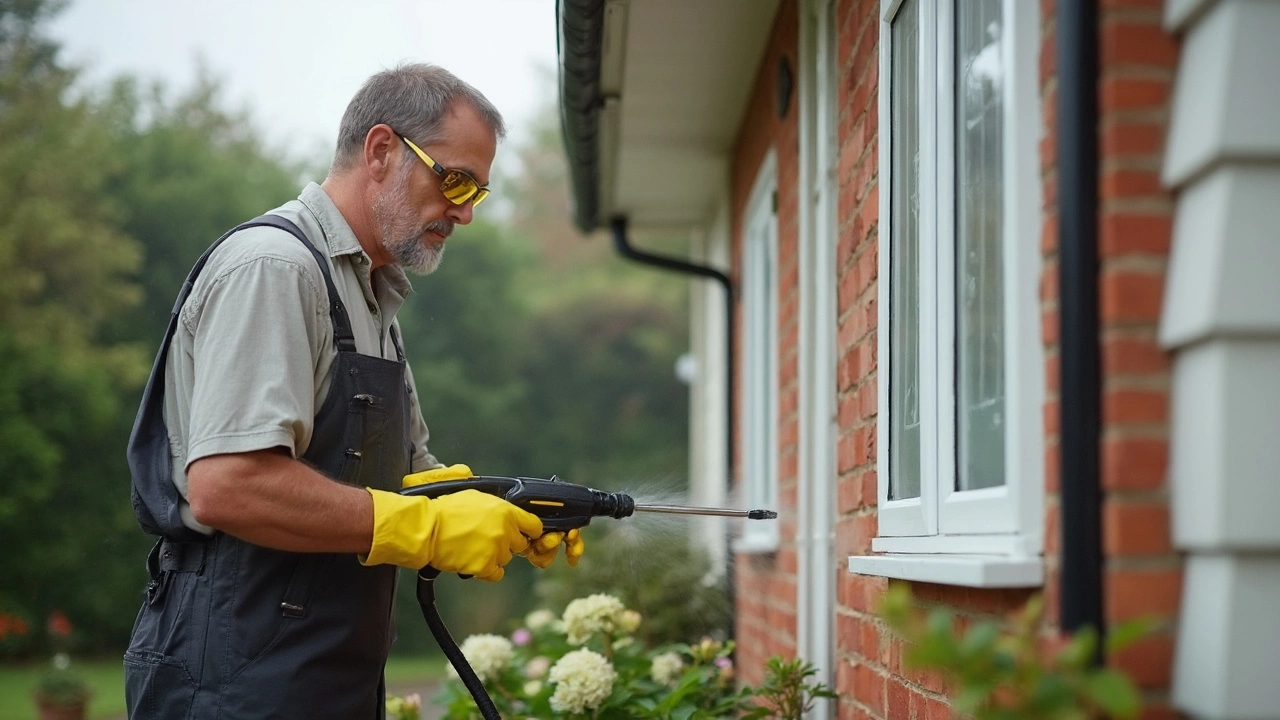
Pressure Wash Vinyl Siding: Is It Safe or Risky?
Ever thought about blasting grime off your vinyl siding with a pressure washer? This article breaks down if pressure washing is really safe for vinyl siding or if you might end up doing more harm than good. Get practical tips, learn common mistakes, and find out the safest ways to keep your siding looking fresh. We'll also bust some myths and share what the pros actually do. It’s everything a DIY homeowner needs to know before turning that machine on.
Read More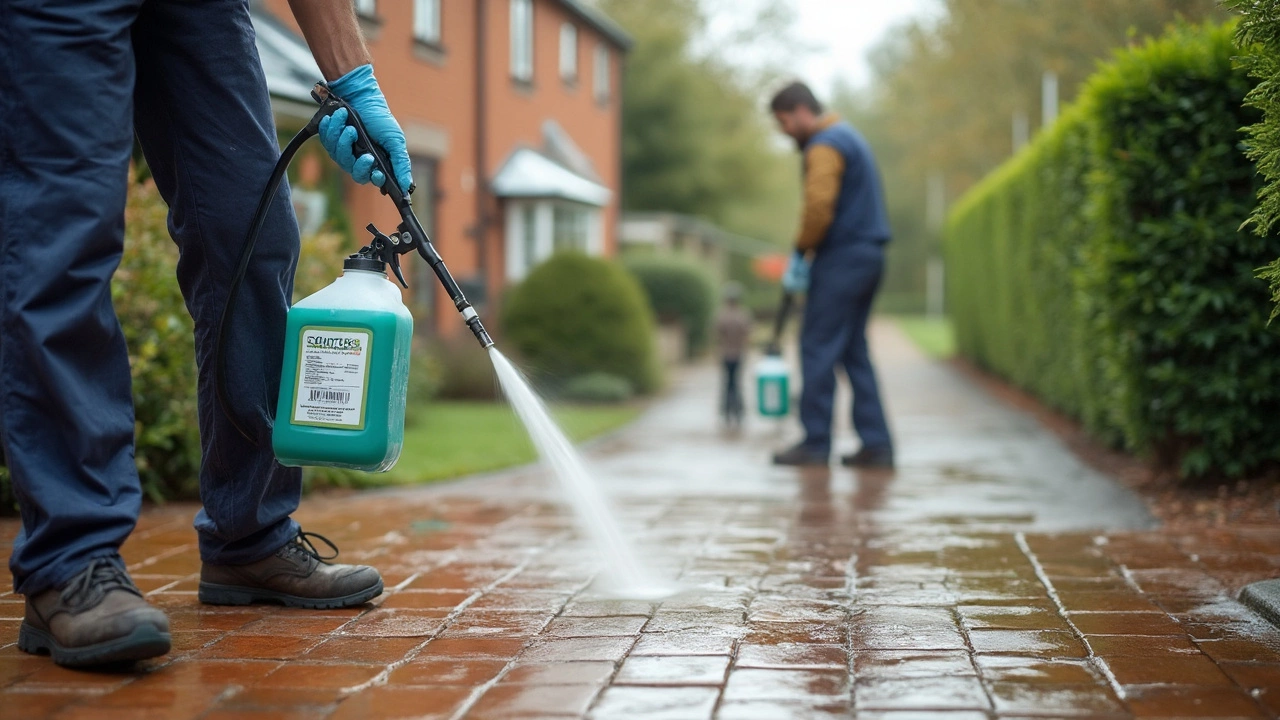
What Solution Do Professional Power Washers Use? The Real Secrets Behind Their Shine
Ever wonder what the pros actually spray on driveways and decks before blasting away the grime? This article dives into the real solutions professionals use—not just water, but a mix of cleaners and techniques that actually work. Find out why some pros pick bleach-based solutions and why others go green, plus smart tips for different surfaces. You’ll get the facts on what to avoid so you don’t ruin your siding or stain your patio. Learn how to choose the right cleaner for your next job and understand how the best in the business keep things spotless.
Read More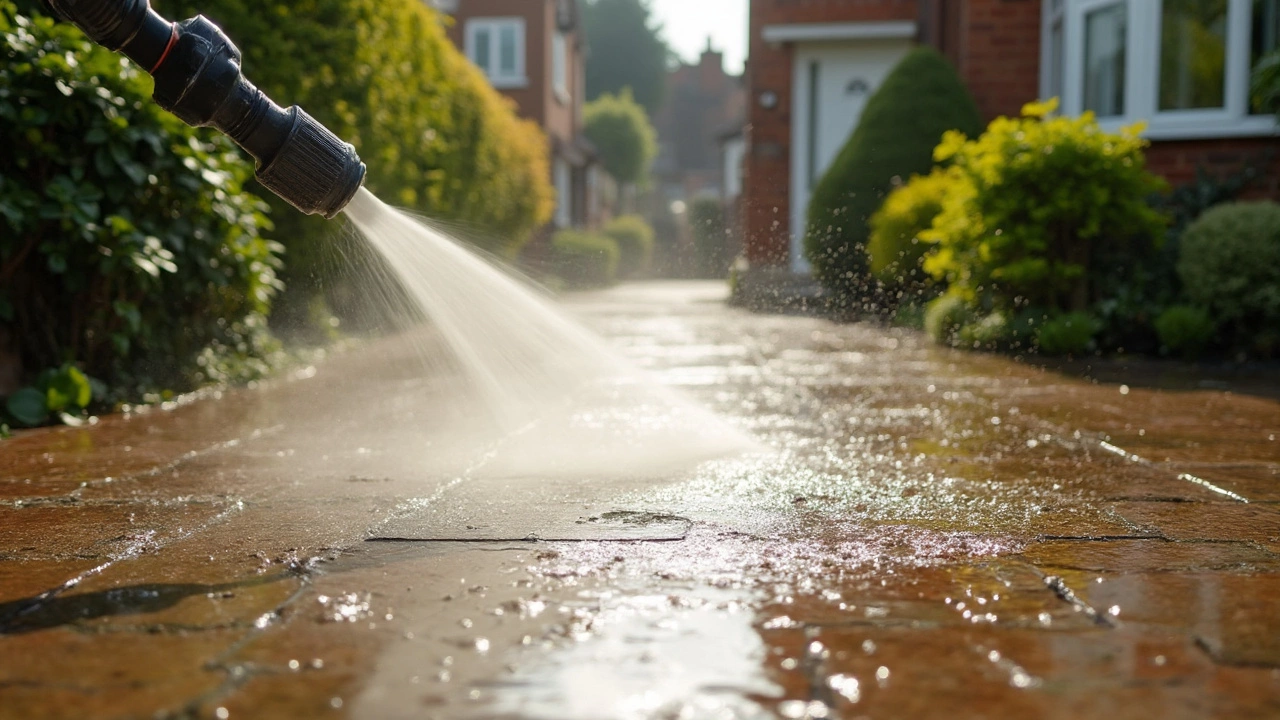
How Much PSI Is Needed to Pressure Wash a Driveway?
Picking the right PSI for pressure washing a driveway can make or break your cleaning job. Too little power, and you won't get those oil stains out. Too much, and you can damage the concrete or pavers. This article breaks down exactly how much PSI you need and why it matters. Get tips on choosing the right pressure washer and how to get pro-level results at home.
Read More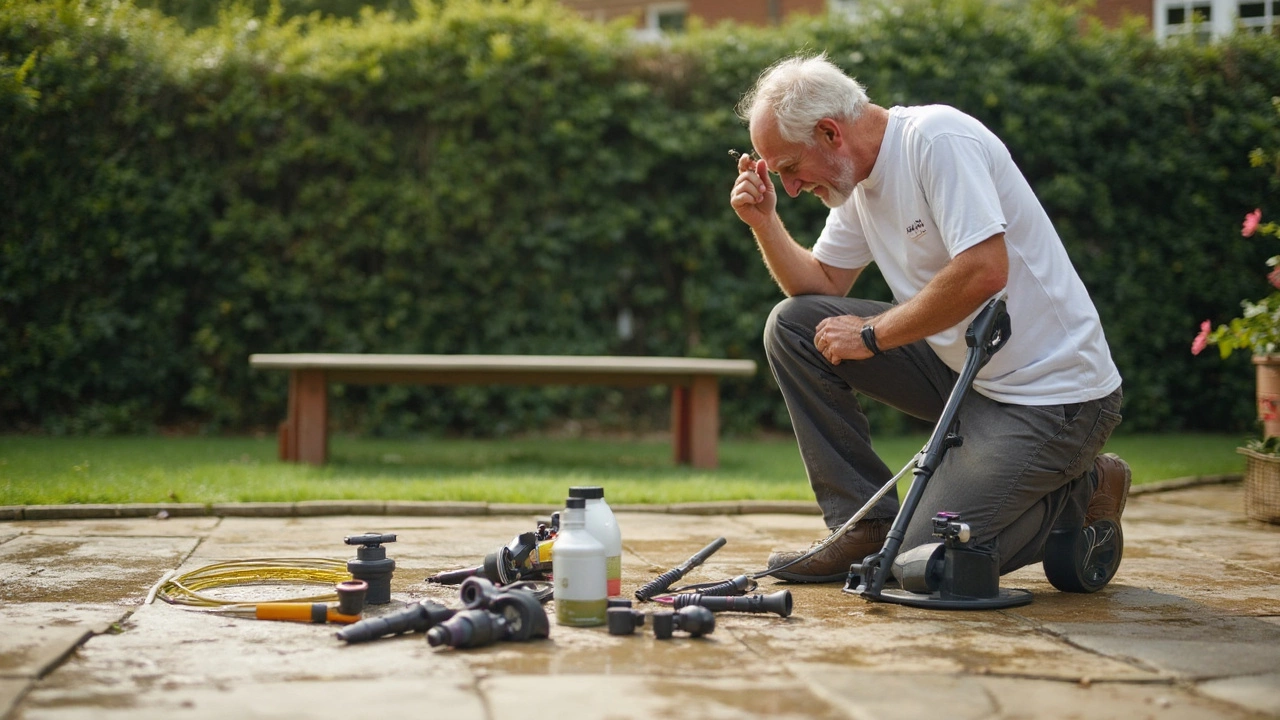
Is 2000 PSI Enough to Clean a Concrete Slab? Real-World Pressure Washing Tips
Wondering if a 2000 PSI pressure washer can tackle your concrete slab? This article breaks down how much cleaning power you actually need, what 2000 PSI gets you in the real world, and smart ways to boost results. Learn about the right nozzle choices, how surface type changes the game, and tips for getting the most out of your equipment. If you want clean concrete without destroying your gear or your slab, this guide is for you.
Read More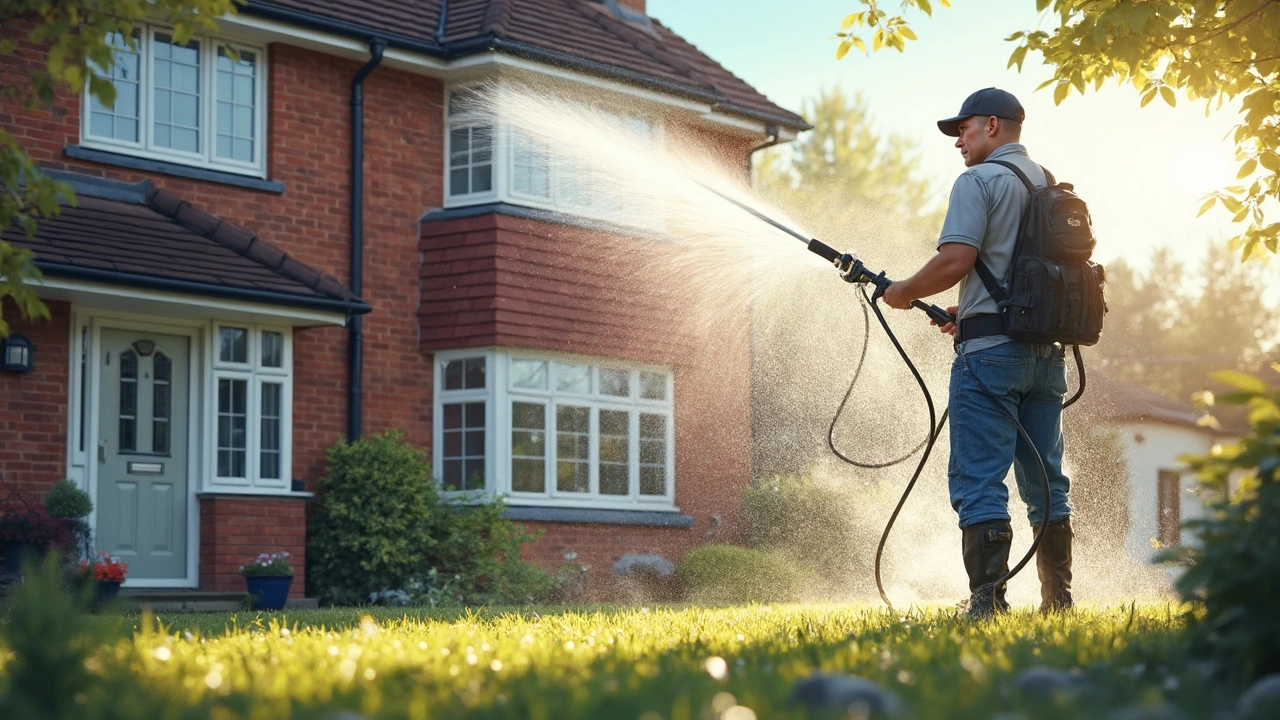
What Do Professionals Use to Pressure Wash Houses?
Pressure washing a house can be quite the task, but with the right tools and techniques, professionals make it look easy. Discover the high-quality equipment they use, ranging from powerful pressure washers to specific nozzles, and learn their insider tips for effective cleaning. This article dives into the world of professional pressure washers, highlighting why they choose specific tools and how you can apply their methods for a cleaner home exterior.
Read More